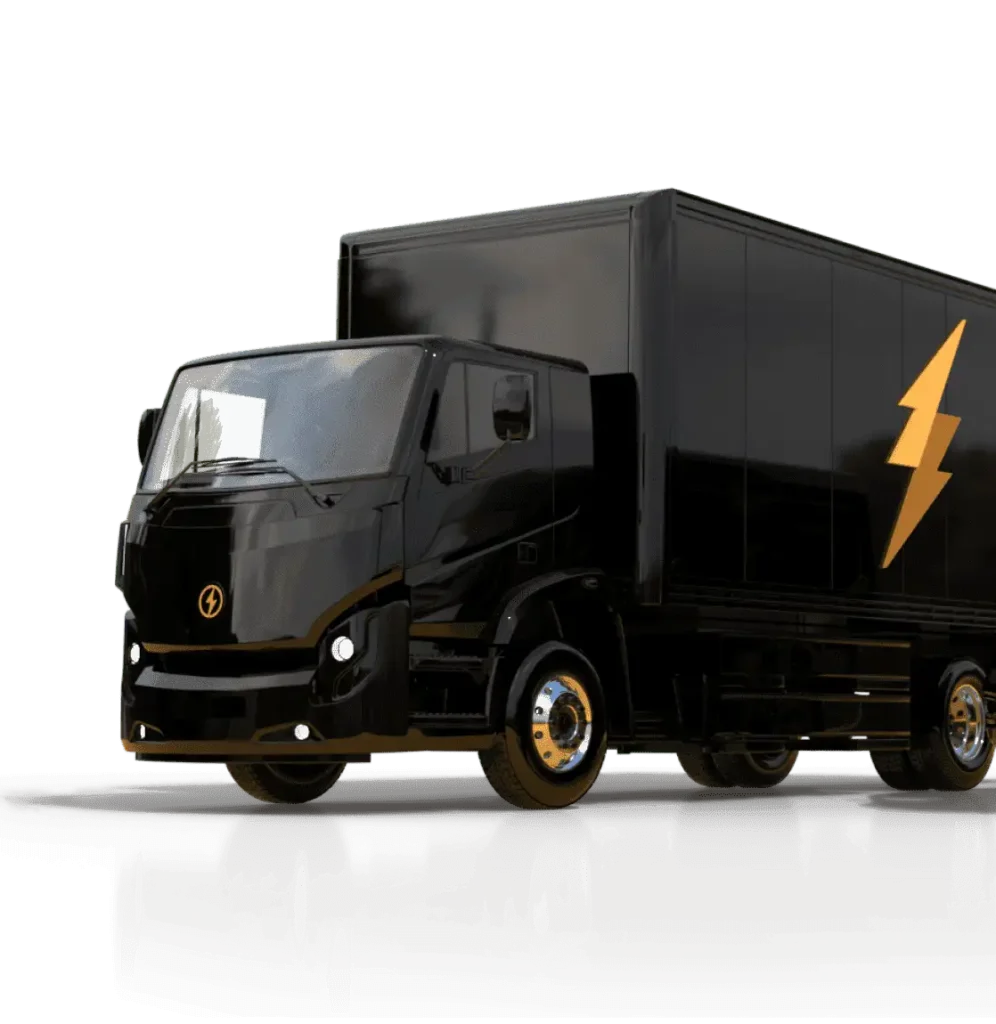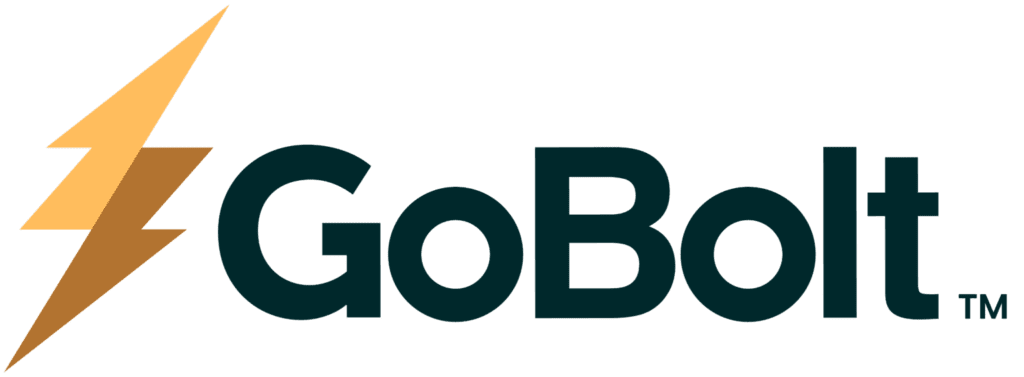FAQs - Third Party Logistics (3PL)
A 3PL is a company that handles logistics functions for brands, typically warehousing, fulfillment, transportation, and returns. Retailers outsource to 3PLs to scale faster, reduce fixed costs, access technology, and expand coverage without building their own network or hiring large ops teams.
“Third-party logistics” refers to outsourcing logistics activities, such as storage, pick/pack, shipping, last-mile, and reverse logistics, to a specialist provider. The 3PL integrates with your ecommerce stack and carrier network to move orders from purchase to delivery efficiently.
A “true 3PL” provides end-to-end operational services (receiving, storage, pick/pack, shipping, returns) plus systems integration, performance reporting, and carrier management. It owns the SOPs and SLAs to deliver predictable cost, speed, and service, not just space or labour.
No. A warehouse is just storage space. A 3PL layers process, labour, technology, and transportation onto storage to run fulfillment and shipping at scale, including inventory control, order processing, carrier selection, and reverse logistics.
Core services include inbound receiving, storage, pick/pack, labelling, kitting, shipping, returns, and customer-specified value-added services. Many 3PLs also offer carrier rate shopping, freight management, inventory planning support, and analytics dashboards.
A provider that receives your inventory, stores it in multiple nodes, picks and packs online orders, selects carriers, ships, and processes returns, integrated with your ecommerce platform and WMS/OMS for real-time visibility and reporting.
No. Distributors buy and resell goods; suppliers manufacture or source products. A 3PL doesn’t take ownership of inventory, it stores, processes, and transports inventory on your behalf under service agreements.
Orders flow from your store/OMS into the 3PL’s WMS. Associates pick and pack, labels print via carrier integrations, and shipments are inducted to carriers. Inventory counts and tracking updates sync back to your systems; returns follow a reverse-logistics workflow.
DTC brands, marketplaces, wholesalers, and omni-channel retailers use 3PLs to improve speed, reduce cost per order, add capacity for peaks, launch new regions, and professionalize fulfillment without large capex.
You gain scale, coverage, and specialized expertise. A good 3PL lowers cost per order through better node placement, process discipline, and carrier mix while improving delivery speed, on-time rates, and post-purchase experience.
A 3PL operates logistics (facilities, labour, transport). A 4PL acts as a strategic orchestrator, managing multiple 3PLs and carriers, network design, and optimization. Many brands use a 3PL; larger, complex networks sometimes use a 4PL atop multiple partners.
5PLs focus on orchestrating entire ecosystems, often asset-light, data-driven, and coordinating multiple 3PL/4PL partners across regions. They emphasize network optimization, procurement, and technology rather than operating warehouses or fleets themselves.
Freight forwarders are typically 3PLs specializing in international transport: booking capacity, consolidating freight, managing documents, and customs. Some forwarders offer 4PL-like orchestration, but core forwarding sits within 3PL.
No. Brokers arrange motor-carrier capacity for shippers (primarily transportation). Full 3PLs provide broader services, such as warehousing, fulfillment, transportation management, and returns—often with physical operations and technology platforms.
A warehouse stores goods. A fulfillment center adds order processing and shipping. A 3PL runs fulfillment as a service, combining facilities, labour, systems, transportation management, and performance SLAs for multiple clients.
An LLP (Lead Logistics Provider) is similar to a 4PL, with strategic coordination across providers and modes. A 3PL delivers hands-on operations. Some 3PLs also offer LLP advisory to design networks and govern partners.
No. In dropshipping, you don’t hold inventory; the supplier ships directly to customers. With a 3PL, you own the inventory stocked at the 3PL’s facilities; they fulfill on your behalf with your branding and service levels.
A 3PL can subcontract components (e.g., carriers), but it remains accountable for outcomes, inventory accuracy, order SLAs, damage rates, and on-time performance per contract.
Both. 3PLs handle DTC parcels and B2B wholesale (case/pallet) shipments to retailers or stores. Many offer omni-channel capabilities, including store replenishment, marketplace fulfillment, and cross-border.
It varies. Many 3PLs own fulfillment operations and outsource transportation to parcel and LTL carriers. Some run dedicated fleets or partner networks; strategic services (planning, analytics) are usually in-house.
Common categories are transportation-focused, warehouse/fulfillment-focused, and integrated (end-to-end) providers. In practice, leading 3PLs blend all three: multi-node fulfillment, transportation management, and value-added services under one contract.
Inbound receiving, storage, pick/pack, kitting, labeling, FBA prep, subscription box assembly, carrier selection, parcel/LTL/TL shipping, returns processing, refurbishment, and customer-specific value-added services.
Many specialize (e.g., DTC parcels or retail replenishment), but omni-channel 3PLs support both: small-parcel DTC plus B2B case/pallet orders to retailers, marketplaces, and stores.
Yes. Vertical specialists serve fashion/apparel, beauty, electronics, bulky/home, and regulated goods. They tailor SOPs for SKU profiles, packaging, hazmat, serial control, and returns complexity.
A 3PL suited for marketplace or supplier-direct workflows: tight integrations, fast receiving, robust SKU onboarding, small-parcel efficiency, and branded packaging, while still holding your owned inventory where needed.
A provider whose core is transport management (parcel, LTL, TL, freight consolidation, cross-dock) with optional storage and fulfillment. Good for firms that need shipping optimization more than deep pick/pack operations.
A provider optimized for order processing, high-throughput picking, kitting, custom packaging, and returns, often with multi-node networks to reduce delivery times and cost per order.
A single partner that combines fulfillment, transportation management, reverse logistics, and analytics with unified technology and SLAs, simplifying vendor management and improving accountability.
Yes, kitting, light assembly, personalization, gift-wrap, inserts, bundling, QC, relabeling, and refurbishment. Clear SOPs and pricing prevent surprises and keep throughput predictable.
Map your order profile (units/order, SKU count), service levels (same-day/2-day), channels (DTC, wholesale), returns rate, and seasonality. Choose a 3PL whose strengths align, e.g., fulfillment-led for DTC spikes, integrated for omni-channel scale.
Match your order volume, SKU profile, delivery promises, and growth plans to a 3PL’s strengths. Key checks: geographic network, integrations, SLAs, sustainability options, and customer references.
Start with industry directories, peer referrals, and e-commerce platform partners. Shortlist providers that match your region, product type, and service levels; then run a detailed RFP with site visits.
A good 3PL provides consistent on-time performance, real-time inventory visibility, clear pricing, and proactive issue resolution. Look for technology maturity and a track record in your category.
Leaders vary by region and niche, global integrators for scale, and specialized DTC 3PLs for high-touch fulfillment. Choose based on fit and service quality, not size alone.
Outsourcing fulfillment frees capital and lets you focus on sales and product. The 3PL’s network density lowers per-order cost while improving speed and customer experience.
Pros: faster scale-up, lower fixed costs, better delivery speed. Cons: less direct control, dependence on partner’s processes, and potential hidden fees if SLAs are vague.
Possible downsides include reduced operational visibility, change-management overhead, and penalties for sudden volume swings. Careful contract design and live dashboards can mitigate these risks.
For most mid- to large-size DTC brands, yes. The savings from shared labor, space, and carrier rates generally exceed in-house costs once volume passes a few hundred orders daily.
Surveys show 80 %+ of large retailers and a rapidly growing share of mid-market DTC brands use 3PL services to scale fulfillment.
To achieve faster delivery, lower shipping cost per order, and flexible peak capacity without building or staffing your own fulfillment network.
Most 3PLs charge for receiving, storage (per pallet/bin), pick/pack (per order or unit), packaging materials, shipping, and optional value-added services such as kitting.
Estimate inbound receiving + monthly storage + average pick/pack fee + shipping cost + returns handling. Multiply by projected order volume and add seasonal surcharges.
Rates vary widely by region and volume, but typical all-in small-parcel costs range from $5–$12 per order, including storage, pick/pack, and carrier fees.
Some providers add a monthly account-management fee (often $200–$1,000) for reporting, support, and systems integration.
Markup depends on the service mix. Fulfillment markups of 10–20 % over direct labour and carrier costs are common to cover overhead and technology.
By combining warehouse automation, labour efficiency, and volume-discounted carrier rates, then charging predictable per-order fees that include their margin.
For growing brands, shared infrastructure and lower shipping rates typically offset fees. In-house fulfillment rarely beats 3PL cost efficiency beyond very low volumes.
Not once order volume is moderate to high. In-house fixed costs (rent, labor, systems) usually exceed variable 3PL fees at scale.
Improve demand forecasting to lower storage, batch orders to raise pick efficiency, and negotiate annual volume discounts and transparent SLA penalties.
An RFP (Request for Proposal) outlines your volumes, SKUs, and SLA needs so providers can give detailed cost and service proposals, enabling apples-to-apples comparisons.
Define service levels and penalties, request transparent rate cards, and insist on clear terms for surcharges, peak pricing, and exit. Use your forecast data to back pricing.
It’s a service agreement detailing responsibilities, performance metrics (on-time rate, accuracy), pricing schedules, and dispute procedures between a shipper and a 3PL.
Key metrics: on-time fulfillment, order accuracy, inventory accuracy, damage rate, and customer service response times. Include remedies for non-compliance.
Benchmark market rates, share reliable forecasts, and bid from multiple providers. Negotiate volume tiers, returns handling, and tech integration fees up front.
It suggests comparing at least three competitive proposals to gain leverage and uncover market pricing norms.
Aim to secure 70 % of key asks that matter most, conceding the remaining 30 % on lower-value points to build a partnership.
Avoid revealing your absolute budget ceiling or urgent deadlines. Instead, frame discussions around value, service levels, and total cost of ownership.
A counter of around 10–20 % is common if supported by market data. Higher demands need clear justification and risk stalling talks.
Review performance quarterly, track KPIs in real time, and renegotiate annually based on actual volumes, not just initial forecasts.
Every 2–3 years, or sooner if growth plans or service failures warrant a fresh market check to ensure competitive rates and capabilities.
A 3PL receives inventory, stores it, picks and packs orders, ships with chosen carriers, and handles returns. The process is coordinated through a warehouse management system that syncs with your ecommerce or ERP platform.
Many operate their own facilities and labor; some lease space or subcontract transport. Ownership is less important than proven SLAs, real-time tracking, and scalability.
They combine efficient labor, automated operations, and discounted carrier rates, charging per-order or per-pallet fees with a built-in margin. Value-added services (kitting, special handling) provide extra revenue streams.
Inventory is received, scanned, and stored in bins or pallets. Systems track stock in real time, trigger replenishment, and allocate items to orders for precise pick/pack and reduced shrinkage.
Typical fees include inbound receiving, storage (per pallet/bin), pick/pack (per order or unit), packaging materials, shipping, and optional value-added services like kitting or custom packaging.
Common challenges include demand variability, last-mile delays, labor shortages, and rising transportation costs. A strong 3PL mitigates these with flexible capacity and optimized routing.
Receiving, put-away, inventory storage, order processing, picking, packing, and shipping. A good 3PL tracks each step and provides live status updates.
Returned items are inspected, logged, restocked if sellable, or routed to disposal/rework. Data flows back to your OMS for quick refunds or exchanges.
It’s the process of handling product returns, recycling, or disposal. 3PLs manage return shipping, inspection, repackaging, and restocking to reduce waste and recover value.
Yes. 3PLs often partner with freight forwarders for international inbound shipments while focusing on domestic storage, fulfillment, and final-mile delivery.
Leading WMS platforms like Manhattan, Blue Yonder, and Extensiv offer robust inventory tracking, automation, and API integrations. The best choice depends on order complexity and integration needs.
Pricing varies by features and scale, typically starting around $1,000–$5,000/month for mid-size operations. Some 3PLs include WMS access in their per-order fees.
They connect directly to platforms like Shopify, BigCommerce, or custom ERPs via APIs. Orders flow in automatically, and tracking updates flow back to customers.
Shopify provides integrations with 3PLs and has its own fulfillment network in some regions. Most Shopify merchants still partner with independent 3PLs for broader coverage.
Real-time scanning and barcoding at every step, from receiving to shipping, keep inventory and order data accurate. System alerts flag discrepancies instantly.
Global leaders include Manhattan Associates, Blue Yonder, and Oracle NetSuite. Many 3PLs build proprietary layers on top for client dashboards and analytics.
It supports rapid SKU onboarding, real-time inventory sync, marketplace connections (Amazon, Etsy, etc.), and branded packaging all through automated APIs.
Automated picking, dynamic routing, and predictive labor scheduling reduce labor and shipping costs, improving order accuracy and throughput.
Reputable 3PLs implement encrypted data transmission, user access controls, audit logs, and routine security testing to safeguard inventory and customer data.
Yes. Modern 3PLs push live tracking links and SMS/email updates directly to customers, enhancing transparency and post-purchase experience.
The global 3PL market exceeds $1 trillion and is growing in double digits annually, driven by ecommerce expansion and rising delivery expectations.
Yes. Demand for outsourced logistics continues to rise as brands seek faster shipping, better cost control, and international reach without owning facilities.
Global leaders include DHL Supply Chain, Kuehne+Nagel, and DB Schenker, each with extensive warehousing and transportation networks.
They include DHL, UPS Supply Chain Solutions, FedEx Logistics, XPO Logistics, Kuehne+Nagel, DB Schenker, Nippon Express, GEODIS, CEVA Logistics, and C.H. Robinson.
“Best” depends on the metric, speed, coverage, or technology. DHL and UPS consistently rank high in global service quality and network density.
Integrated players with high network density and advanced technology (e.g., DHL, UPS) generally earn the highest margins in the sector.
Key trends include automation, robotics, AI-driven routing, sustainability (EV fleets, carbon-neutral options), and near-shoring to cut lead times.
Omni-channel fulfillment, real-time visibility, flexible micro-fulfillment, carbon tracking, and AI-driven demand forecasting lead current innovation.
Major players include UPS Supply Chain, FedEx Logistics, XPO Logistics, Ryder, and regional DTC specialists offering fast two-day coverage.
Industry data shows over 80 % of large retailers and a growing majority of mid-market ecommerce brands now outsource at least one logistics function to 3PLs.
In the U.S., third-party logistics (3PL) providers handle warehousing, order fulfillment, and freight transportation for ecommerce and retail brands. They integrate with carriers like UPS, FedEx, and USPS to deliver nationwide two-day or next-day shipping.
Top U.S. 3PLs include UPS Supply Chain Solutions, FedEx Supply Chain, XPO Logistics, Ryder, and C.H. Robinson. Many regional specialists also serve fast-growing ecommerce and direct-to-consumer (DTC) brands.
The American 3PL market exceeds $300 billion annually and continues double-digit growth, fueled by ecommerce expansion, near-shoring, and higher consumer expectations for fast, affordable shipping.
Major logistics hubs include Chicago, Dallas–Fort Worth, Atlanta, Southern California’s Inland Empire, and New Jersey/New York, chosen for proximity to ports, highways, and large consumer populations.
Look for multiple warehouse nodes for 2-day ground coverage, proven carrier relationships, advanced WMS/OMS integrations, and transparent pricing. U.S. compliance with OSHA, FDA (for food/health), and customs regulations is critical.
Costs vary by labor rates and real estate. Coastal hubs (e.g., New York, Los Angeles) often cost more than central hubs (e.g., Dallas, Memphis), but may reduce delivery times to key markets.
Yes. Many U.S. 3PLs manage exports and imports, offering customs brokerage, duty optimization, and cross-border shipping to Canada, Mexico, and overseas markets.
Rising demand for same-day delivery, automation (robotics, AS/RS), sustainability (electric fleets, carbon-neutral shipping), and data-driven forecasting are defining current U.S. 3PL innovation.
Ecommerce, retail, consumer electronics, apparel, and food & beverage dominate 3PL usage. Healthcare and pharmaceuticals are growing rapidly due to cold-chain and compliance needs.
Evaluate network coverage, integration with ecommerce platforms, performance SLAs, and references in your category. Request a detailed proposal covering costs, KPIs, and scalability for peak seasons.
Third-party logistics in Canada works the same as globally: providers manage warehousing, fulfillment, and transportation for brands. Canadian 3PLs specialize in bilingual customer service, customs brokerage, and cross-border shipping with the U.S.
Purolator, Canada Post, and TFI International are major domestic carriers and logistics providers, while global 3PLs like DHL, UPS, and FedEx operate extensive Canadian networks.
There is no single “best” provider. Large-scale options include TFI International and FedEx Supply Chain, while regional specialists focus on DTC fulfillment and fast last-mile delivery.
Leading options include TFI International, Metro Supply Chain, SCI Logistics, and global firms like DHL and UPS Supply Chain Solutions, depending on product type and market reach.
Canada has thousands of logistics firms, ranging from national parcel carriers to niche fulfillment warehouses serving ecommerce and retail.
Yes. Ecommerce growth, near-shoring, and consumer expectations for two-day shipping are driving steady investment in Canadian warehousing and transportation capacity.
Purolator, Canada Post, UPS, and FedEx are common for national delivery. The best fit depends on parcel size, speed, and destination coverage.
The U.S. logistics market is larger and more mature. Canada’s sector is smaller but growing rapidly with strong cross-border trade opportunities.
Retail, food and beverage, and manufacturing lead logistics employment, followed by ecommerce fulfillment and courier services.
Supply chain directors and logistics managers with cross-border or cold-chain expertise typically earn the highest salaries in Canada’s logistics sector.
Get a Quote



